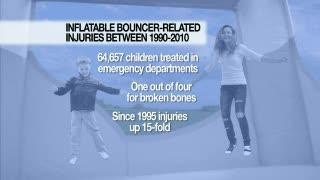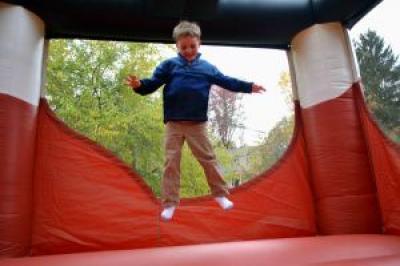Until national safety guidelines are in place, parents should consider the risks before allowing their child to use an inflatable bouncer. If parents allow their child to use an inflatable bouncer, they should consider limiting use to children 6 years of age and older, requiring that an adult be present to supervise while the bouncer is in use and allowing only one child on the bouncer at a time. If more than one child will be on the bouncer at the same time, the children should be approximately of the same age and size.
This is the first study to use a nationally representative sample to examine injuries associated with inflatable bouncer-related injuries that were treated in U.S. emergency departments. Data for this study were obtained from the National Electronic Injury Surveillance System (NEISS), which is operated by the U.S. Consumer Product Safety Commission. The NEISS provides information on consumer product-related and sports and recreation-related injuries treated in hospital emergency departments across the country.

Inflatable bouncers such as bounce houses, slides or obstacle courses are the new craze for kids' birthday parties and/or celebrations. While they appear to be a fun activity for a child, a new study shows that there has been an alarming increase in injuries from inflatable bouncers. In 2010 alone, more than 30 children per day were treated in hospital emergency departments for injuries associated with these bouncers. Dr. Gary Smith, director of the Center for Injury Research and Policy, explains why national safety guidelines should be developed to help prevent these injuries.
(Photo Credit: Nationwide Children's Hospital)

Dr. Smith recommends that an adult be present to supervise while the bouncer is in use and to allow only one child on the bouncer at a time.
(Photo Credit: Nationwide Children's Hospital)
Source: Nationwide Children's Hospital